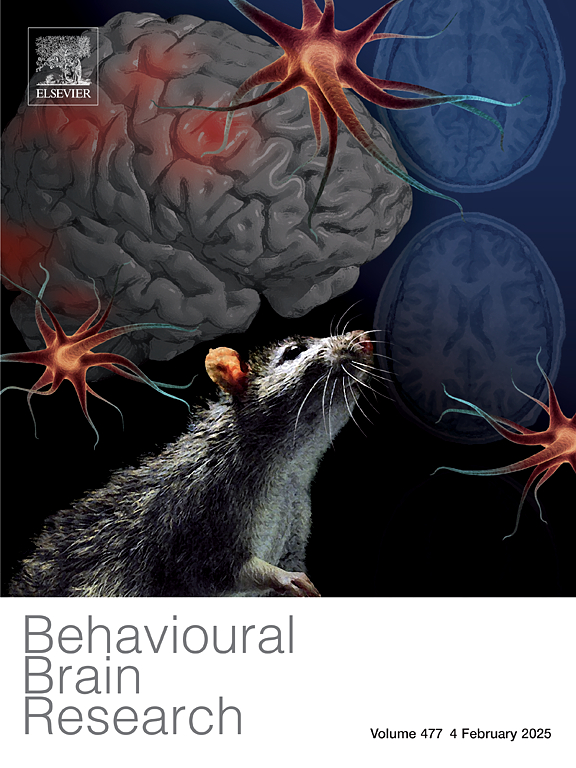Grey matter loss across deteriorating cognitive stages in Parkinson’s disease
IF 2.3
3区 心理学
Q2 BEHAVIORAL SCIENCES
引用次数: 0
Abstract
The purpose of the present study was to depict the pattern of grey matter (GM) abnormalities in patients with Parkinson’s disease (PD) and various stages of cognitive decline. GM changes were investigated with the use of voxel-based morphometry in three age-matched groups consisted of PD patients with normal cognition (PD-NC, n = 20), mild cognitive impairment (PD-MCI, n = 20) and dementia (PDD, n = 21). The Parkinson’s disease-cognitive rating scale (PD-CRS) was used for the neuropsychological assessment of the subjects and to define patient groups. GM atrophy was observed in the PD-MCI group in right middle and inferior temporal gyri and in the PDD group in right thalamus and hippocampus both compared to PD-NC group. Regression analyses retrieved significant associations among total, cortical, and subcortical PD-CRS scores and GM volume in multiple areas, with an exceptionally stable finding being the correlation of striatal atrophy with deteriorating cognitive function. Significant associations were also observed between GM volume in specific regions and the performance of patients in particular PD-CRS items. The study findings reveal a central role of striatal atrophy in the PD-related cognitive decline. Degenerative changes in temporal regions could contribute to MCI, while hippocampal and thalamic atrophy are proposed to accompany the transition to dementia.
帕金森氏症认知恶化阶段的灰质损失
本研究的目的是描述帕金森氏病(PD)患者的灰质(GM)异常模式和不同阶段的认知衰退。使用基于体素的形态测量法研究了三个年龄匹配组的GM变化,这些组由正常认知(PD- nc, n = 20)、轻度认知障碍(PD- mci, n = 20)和痴呆(PDD, n = 21)的PD患者组成。帕金森病认知评定量表(PD-CRS)用于受试者的神经心理评估和确定患者群体。与PD-NC组相比,PD-MCI组右侧颞中下回、PDD组右侧丘脑和海马均出现GM萎缩。回归分析发现,总PD-CRS评分、皮质评分和皮质下评分与多个区域的GM体积之间存在显著关联,纹状体萎缩与认知功能恶化之间存在异常稳定的相关性。在特定区域的GM体积和患者在特定PD-CRS项目中的表现之间也观察到显著的关联。该研究结果揭示了纹状体萎缩在pd相关认知衰退中的核心作用。颞区退行性改变可能导致轻度认知损伤,而海马和丘脑萎缩被认为伴随着向痴呆的过渡。
本文章由计算机程序翻译,如有差异,请以英文原文为准。
求助全文
约1分钟内获得全文
求助全文
来源期刊

Behavioural Brain Research
医学-行为科学
CiteScore
5.60
自引率
0.00%
发文量
383
审稿时长
61 days
期刊介绍:
Behavioural Brain Research is an international, interdisciplinary journal dedicated to the publication of articles in the field of behavioural neuroscience, broadly defined. Contributions from the entire range of disciplines that comprise the neurosciences, behavioural sciences or cognitive sciences are appropriate, as long as the goal is to delineate the neural mechanisms underlying behaviour. Thus, studies may range from neurophysiological, neuroanatomical, neurochemical or neuropharmacological analysis of brain-behaviour relations, including the use of molecular genetic or behavioural genetic approaches, to studies that involve the use of brain imaging techniques, to neuroethological studies. Reports of original research, of major methodological advances, or of novel conceptual approaches are all encouraged. The journal will also consider critical reviews on selected topics.
 求助内容:
求助内容: 应助结果提醒方式:
应助结果提醒方式:


